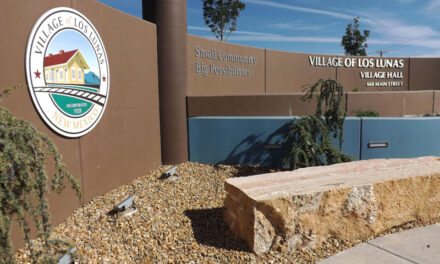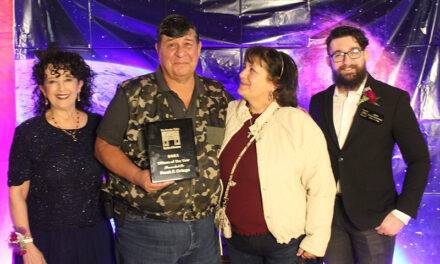The clear skies of New Mexico offer bright views of the moon and its many craters. We now understand these craters to be impacts from meteorites, although this knowledge follows many years of controversial scientific exchanges, as reported in Kathleen Mark’s book “Meteorite Craters.”

Similarly, the Meteor Crater in Arizona (then also called Coon Butte and other names), was creating controversy as to its origin. The pieces of the puzzle fell in both volcanic category and meteorite impacts: the general area was known to have volcanic activity, so a volcanic origin made sense; some meteor fragments were found around the crater; the circular shape of the crater rather than an oval outline would indicate that the meteor should have struck at a vertical angle but drilling in the crater did not identify any large meteorite (which would have been very valuable for its metal content); similar circular craters in Germany were known to be from volcanic-caused steam explosions. (The Zuni Salt Lake in Western New Mexico is a recognized volcanic steam explosion crater).
In the 1890s the chief geologist of the U.S. Geological Survey proposed that despite many lines of evidence, the Meteor Crater was of volcanic origin, but he further pursued the mystery by studying moon craters. Later, the sandstone at the base of the crater was found to have been “baked” to temperatures much higher than any volcanic activity, and some rocks were identified as definitely of meteoric origin. Physical studies also revealed that a meteorite impact would result in a large explosion that would explain the circular pattern of impact areas irrespective of meteor trajectory.
From then on, many more craters of meteoric origin were recognized all over the world, and many areas with rich mineral deposits were linked to meteorite craters, such as Sudbury in Canada (rich in Nickel) and in South Africa.
Perplexity remained until the 1940s regarding the moon craters: if the moon craters were formed by meteorite impacts, why was the earth not also covered by craters? Studies of the geometry of craters on the moon showed that almost all moon craters showed the same ratio of depth and extent of the craters.
In 1949, a study found that the known craters on earth also had the same ratio. This confirmed that impact craters on both the moon and earth had been formed by meteorite impacts. As earth underwent many years of erosion and burial of surfaces, only a few craters remain visible on earth.
After postulating that a meteorite had caused the end of the dinosaurs 65 million years ago, the culprit crater was found on the Yucatan peninsula.
In New Mexico, a very old meteorite impact structure (1.5 billion years old) was only recently (2005) recognized just North of Santa Fe. It is named an impact structure because erosion has eliminated the initial crater shape. It was recognized on outcrops along the road to Hyde Memorial State Park by shatter lines in conical shapes that are characteristic of meteorite impacts.

















